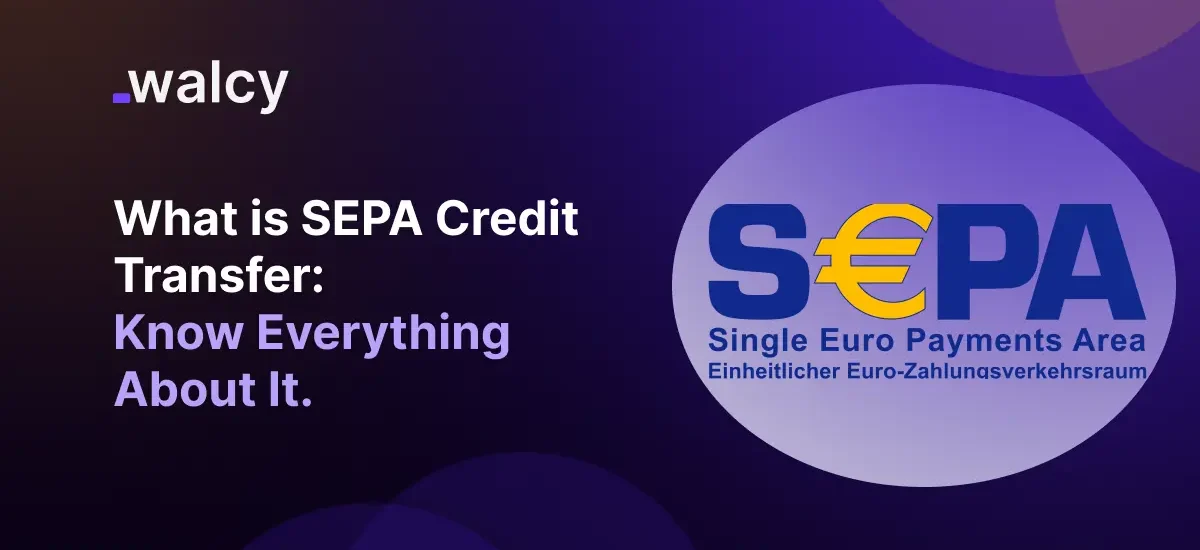SEPA has revolutionized cross-border payments in Europe by reducing payment costs and the needed time to complete the transactions. Together with the four members of the European Free Trade Association (EFTA)—Iceland, Liechtenstein, Norway, and Switzerland—SEPA consists of the 27 countries of the European Union.
SCT assisted in bringing out a significant and beneficial transformation for businesses in the European Union by aligning the legislation and banking institutions. It is a commendable feat that inspires other trade regions like BRICS and ASEAN. SEPA was realized by launching the SEPA Credit Transfer, developed by the European Payments Council, which is the decision-making body for the European banking industry regarding payments.
The SCT scheme represents a standardized and regulated set of rules and processes for making euro-denominated payments. It is a formal framework created to ensure consistent and efficient transactions among participating countries.
What are SEPA Credit Transfers?
SEPA credit transfer is a method of transferring money inter-bank, and it is the most common method of transferring funds. Funds can be transferred on behalf of a business, between individuals, between businesses and individuals, and other legal entities. The payer initiates the credit transfer, which can be a person or organization, to the recipient’s or payee’s bank account.
Regular payments like recurring payments (e.g., paying bills, salaries, or suppliers), one-off payments, and cross-border payments all come under Credit Transfers. Credit transfers are processed using euros as the primary denomination and require details such as the International Bank Account Number (IBAN) and Business Identifier Code (BIC).
Read about: Guide to b2b international payments
Benefits of SEPA Credit Transfers
Cost-efficiency, straight-through-processing, and ease of usage:
SCTs were designed to be cost-effective, with cheaper processing fees and operational costs as the ultimate goal. User-friendliness and straight-through processing, where funds are subjected to automatic processing without manual intervention, make SEPA Credit Transfer cost-efficient and easy to use.
Supports Single Payments and Bulk Payments:
The versatility to manage simple single payments to bulk payments allows users to do so in one go. If there is a requirement to transfer high-value and large volumes of transactions, SCT is versatile and scalable.
Recall duplicate or erroneous transactions unlike Swift:
One of the key benefits of SCT over SWIFT transfers is that transactions deemed duplicated or erroneous can be recalled. This feature provides an added layer of security and control over financial transactions.
Automatic Reconciliation of Incoming Payments:
Since the SCT system matches incoming payments with outstanding invoices or transactions, it supports automatic reconciliation. This eventually reduces administrative workload and substantially improves the accuracy of financial records.
Rejects and Returns can be automated:
The SCT system can easily handle rejects and returns automatically, minimizing manual effort for managing unsuccessful payments.
National level and Cross-border payments have the same efficiency:
Whether the SEPA Credit Transfer is within the SEPA zone or cross-border, payments made through SEPA Credit Transfer are efficient and reliable in both cases.
Features Peculiar to the SCT Scheme
SEPA Data Format ISO 20022 XML Format:
SCTs utilize the SEPA data format, which is the industry-standard ISO 20022 XML standard. This standard ensures consistency in data format and compatibility across all financial institutions within the SEPA zone. Another important role of the standard is that it enhances interoperability and reduces the need for multiple formats.
Execution Time:
The execution time, or turnaround time, is usually 1 business day. This ensures that the processing of payments is timely and provides businesses and individuals with a predictable way to manage cash flow efficiently.
IBAN and BIC:
The use of IBAN (International Bank Account Number) and BIC (Bank Identifier Code) is compulsory in SEPA Credit Transfers. These unique identifiers ensure the accurate and proper routing of payments to the correct accounts within the SEPA network, similar to the IFSC code used by the Indian banking network.
Euro Denominated Transactions:
The primary currency denomination for SCTs is the Euro, and all payments made within the SEPA zone are transacted using Euro currency, simplifying cross-border transactions.
140 Characters for Remittance Information using ISO Standards for Messaging:
SCTs allow for 140 characters of financial transaction-related information, enabling senders to provide more accurate information about the financial transaction. This message adheres to ISO 20022 XML standards, ensuring precision and consistency in communication involving financial transactions.
SCT Inst:
For instant euro credit transfers within the SEPA zone, SCT Inst was officially launched on November 21, 2017. Initially, it supported transfers up to €15,000; however, it can now support up to €100,000, and the recipient’s account is credited within seconds, available 24/7 throughout the year. The SEPA Instant Credit Transfer supports cross-border payments and is as efficient as domestic transfers. This has supported e-commerce, improved cash flow for businesses, and enhanced customer experience with banking or financial transactions.
SCT Rulebooks
These are the official guidelines set by the European Payments Council (EPC) for SEPA Credit Transfer and SEPA Instant Credit Transfer. The rulebook defines instructions for PSPs (Payment Service Providers) to ensure that participating financial institutions comply with the stringent requirements set by the EPC. It covers the process flow, data standards requirements, service levels (timeframes and service availability), and roles and responsibilities of involved parties, including the originator’s bank, the beneficiary’s bank, and any intermediaries.
The EPC frequently updates the SCT rulebooks, usually annually or biennially, and stakeholders are consulted before any revisions. The purpose of revision is to stay up-to-date with the regulatory environment. The rulebooks are available to the public on the EPC’s website, published alongside implementation guidelines, and include the technical specifications needed for the ISO 20022 XML standard.
Brexit and SEPA Credit Transfer Payments
Despite Britain’s exit from the European Union, the UK’s participation in the SEPA scheme remains unaltered. Therefore, UK businesses are still allowed to send and receive SEPA payments, including instant and regular credit transfers, across the Eurozone. This continued inclusion ensures that cross-border transactions within the SEPA region remain seamless and efficient for UK entities, allowing them to maintain trade and financial relationships with their European counterparts. Furthermore, UK businesses largely depend on SEPA transfer systems to maintain steady trade with the Eurozone.
You might Love: Understanding GIRO Payments
Conclusion
The SEPA Credit Transfer (SCT) scheme has radically changed the financial landscape for cross-border payments in the Eurozone thus by harmonizing the payment regulations and banking systems in the Eurozone. The SCT has streamlined the payment processes for organizations and individuals, and it has reduced costs and noticeably improved the speed of payments across the SEPA zone.
Importantly, with beneficial features like automatic reconciliation, allowance for recalling erroneous or redundant transactions, and the introduction of instant credit transfers, SEPA Credit Transfers have improved financial operations within participating countries.
As more regions need to take inspiration and replicate SEPA’s success, as it can be deemed as a benchmark for harmonized regulatory and payment systems, fostering economic integration and collaboration across borders not only within Europe but other countries too. Despite the unfortunate exit of Britain as one of the members of the European Council, the resilience of the SEPA framework under such contingency ensures the resilience of SEPA Credit Transfers in cross-border transactions, reinforcing its importance in the global financial ecosystem.
You shall love: Know Everything About International ACH Transfer in 2024
Do follow us on Facebook and LinkedIn, to stay connected with us.



